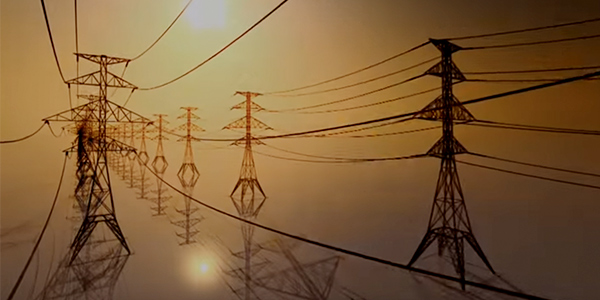By Michael Kuser
RENSSELAER, N.Y. — NYISO last month incorporated additional 115-kV transmission facilities in its energy market model, Chief Operating Officer Rick Gonzales told the Management Committee on Wednesday.
Gonzales said the facilities, mostly in western New York, were incorporated into the real-time market on Dec. 4 and the day-ahead market on Dec. 5. “Commensurate with that activity, we also deployed an enhanced Niagara model, which allows us to better address those transmission constraints,” Gonzales said in delivering the monthly operations report.
The Niagara Power Plant comprises 25 individual generating units, divided into three bulk power system injection points: Niagara 230-kV Bus (1,770 MW total); Niagara 115-kV East Bus (860 MW total); and Niagara 115-kV West Bus (645 MW total).
The ISO previously represented all 25 units as a single facility in the market models, which precluded the market model from shifting generation among these units to manage congestion and increase output from the plant. Operators can now shift output among these generators to manage congestion on both the 230-kV and 115-kV facilities.
Last month’s moves completed a project to begin scheduling and pricing more than 20 lower-voltage transmission facilities in the day-ahead and real-time markets, an effort the ISO’s Market Monitoring Unit, Potomac Economics, had recommended since 2014. (See “ISO to Begin Incorporating 100+kV Tx Facilities in Markets,” NYISO Business Issues Committee Briefs: Sept. 12, 2018.)
Howard Fromer, director of market policy for PSEG Power New York, asked whether the changes had led to a reduction in out-of-merit actions or prices.
“We’re very happy with the way that those two actions have turned out,” Gonzales said. “Securing the 115-kV with its additional constraints into our energy market has resulted in significant reductions in out-of-merit actions for Niagara or Ontario imports.”
He said the enhanced Niagara modeling should result in much more price stability in the entire New York Control Area because Niagara is a significant supplier of energy, reserves and regulation.
The ISO’s Manual 12, Transmission and Dispatch Operations Manual, says, “From time to time, generators must be operated out of economic order or at levels that are inconsistent with the calculated schedules. Any NYISO-authorized deviation from the schedule is considered out-of-merit (OOM) generation and is not subject to regulation penalties. A unit that is out-of-merit is balanced at actual output and may be eligible for a supplemental payment if its bid production cost is not met.”
Winter: So Far, So Good
Emilie Nelson, NYISO vice president of market operations, gave an update on January operations, noting the cold weather over the Martin Luther King Jr. Day weekend (Jan. 19-22) and the arctic blast that hit the state that day.
Although there was substantial snowfall upstate, the storm caused no real transmission or distribution issues, Nelson said. Good coordination with transmission owners and neighboring grid operators led to some transmission being returned to service from maintenance outages in advance of the anticipated weather, she said.
“We did see in advance of the [MLK] weekend generators begin to switch to oil, with escalated gas prices and some limitations projected in advance of Monday, which was the coldest day,” Nelson said. “We of course have a weekly fuel survey process — which can occur more frequently for prolonged periods of cold weather — and we had sufficient oil inventories.”
Demand peaked at 24,728 MW on Monday, Jan. 21, exceeding the 90/10 day-ahead forecast, she said. The demand for energy reflected peak temperatures across the New York Control Area of 8.8 degrees Fahrenheit, which came in very close to the forecast. The minimums experienced were 3 F in Syracuse, 0 F in Albany and 6 F in New York City.
“This was the first time [this winter] we had the cold extend all the way into the downstate regions,” she said. On Jan. 21, the ISO saw about 700 MW of derates because of fuel-related issues and an additional 160 MW from other cold weather issues, Nelson said.
Consolidated Edison, National Grid and other natural gas pipeline operators issued operational flow orders in advance.
The storm hitting as she spoke looked to be very similar to the one in mid-January, both in terms of projected peak load and the value of low temperatures across the state, Nelson said.
Committee Approves Repricing TCC Credit Requirement
The MC approved using the market clearing price to calculate the credit requirement for fixed-price transmission congestion contracts (TCCs), in accordance with Market Services Tariff Section 26.4.2.4.1.
Sheri Prevratil, NYISO manager of corporate credit, reiterated the case she made in persuading the Business Issues Committee earlier in January, which recommended the measure to the MC. (See NYISO Business Issues Committee Briefs: Jan. 16, 2019.)
Under the changes, the ISO will use $0 as the payment obligation portion of the requirement if the price calculated for the fixed-price TCC is less than $0. Otherwise it will continue to use the greater of the payment obligation or the credit holding requirement until receiving payment for the contract. The credit holding requirement is the greater of the auction TCC holding requirement, the fixed-price TCC holding requirement or the mark-to-market calculation.
“Essentially we’re just proposing to change the fixed-price TCC credit requirement to be in line with the holding requirement for auction TCCs,” Prevratil said.
Asked whether stakeholders were adequately protected from the risk of a default like that of GreenHat Energy in PJM, Prevratil said, “Yes, in the end we will be covered more appropriately for these TCCs because the market clearing price will be used to better reflect the risk of the TCC instead of using the fixed price across the term of the TCC.” (See FERC OKs Key PJM Changes to Address GreenHat Default.)
If the change is approved by the Board of Directors in March, the ISO will file with FERC in April for deployment in June.





